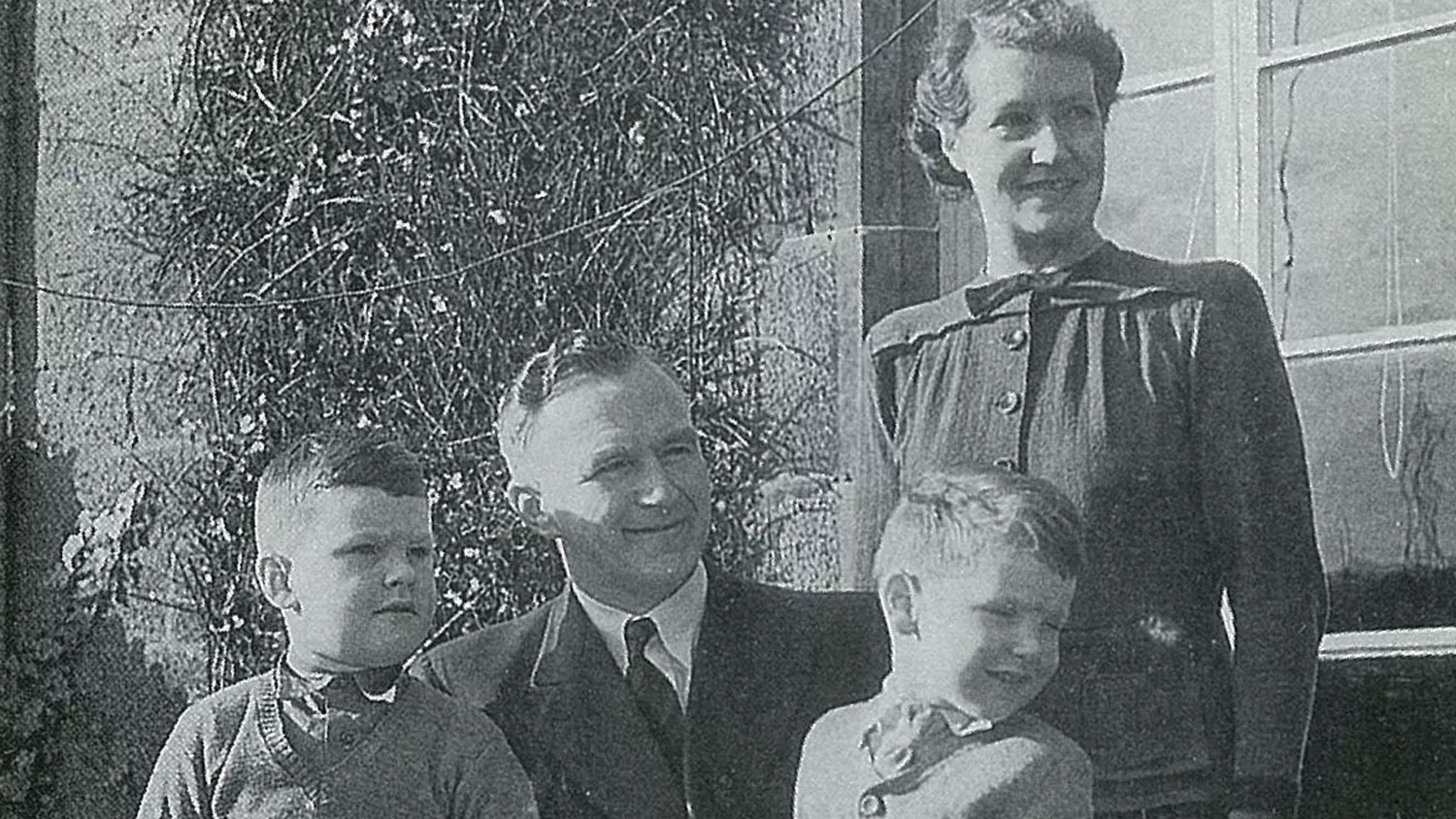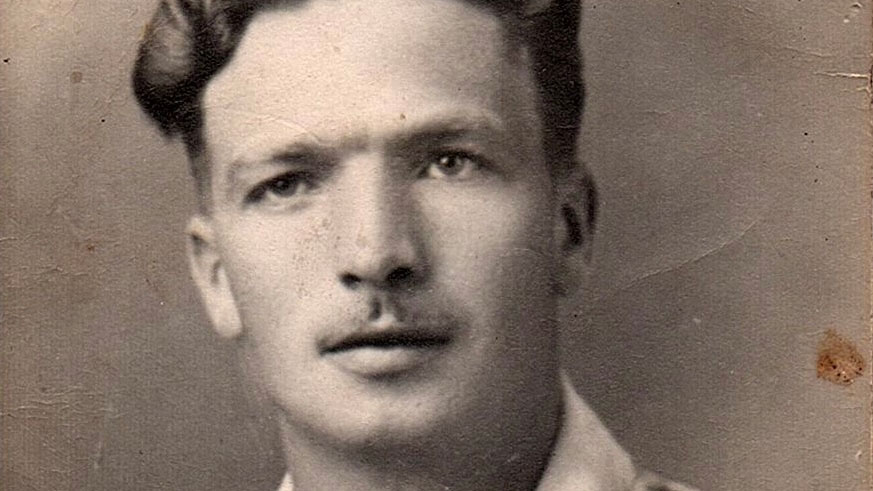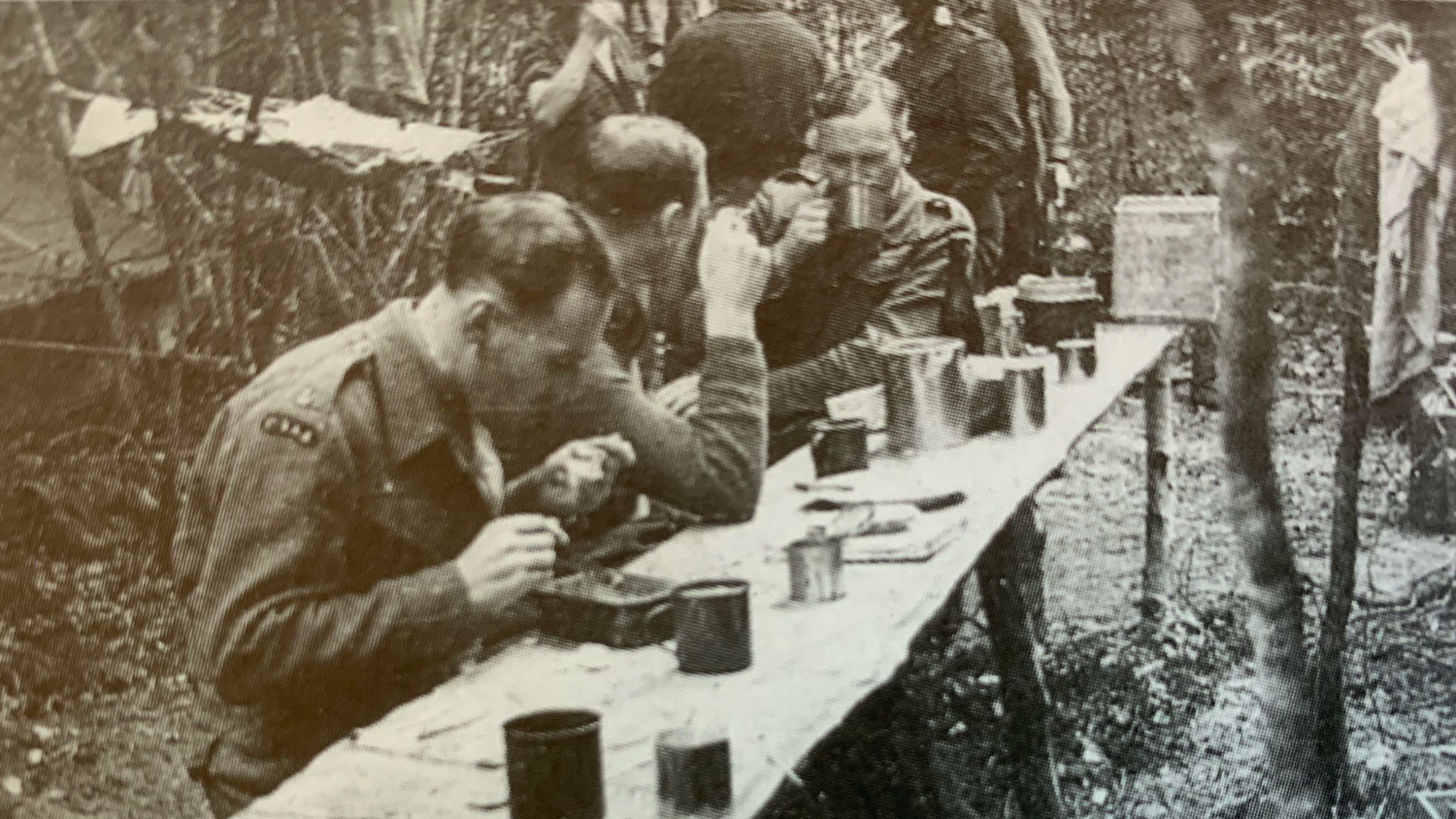The man of god among the men of war: How 1 SAS's 'parachute padre' grappled with his role
With the brutal aftermath of the D-Day landings visible below, the battle-hardened men of 1 SAS flew overhead in a growling Short Stirling, keen to wage their own private war behind enemy lines.
But this time things were different. Along with their weapons, parachutes and rations they had a secret weapon – an unarmed padre.
However, this man of God, with a portable church in a hamper, who became known as the 'parachute padre' wasn't a shrinking violet and his vital role for the unit shouldn't be underestimated.
At 6ft 2in and described as having the classic good looks of a Greek god and the physique of a rugby player, Scottish chaplain Padre Fraser McLuskey didn't look out of place among the men of 1 SAS.
Still, unlike the men he was to parachute alongside, the padre had no combat experience or battle honours under his belt – although he went on to be awarded a Military Cross for bravery.
He didn't know it yet, but he was to bring a great deal of comfort to the Special Forces men, many of whom, by this point, were succumbing to the demons that haunted them while awake and asleep.
Speaking to BFBS Forces News, Damien Lewis, military historian and author of books such as The Ministry of Ungentlemanly Warfare and The Flame of Resistance, explains the vital impact Padre McLusky had on the men of 1 SAS in his latest book SAS Daggers Drawn.

He said: "It's one of the most wonderful things about that part of the French operations is that... extra dimension having [Padre McLuskey] there brings – it was vital to their morale.
"And not only that, he's watching them and he's observing them and he's realising and noting the gradual descent into trauma they are all suffering from."
Time to try something different
As the war raged on, the young Scot, a chaplain at Glasgow University, felt desperate to play his part and questioned whether to contribute as a man of God or a man of war.
His wife Irene was a German pastor's daughter and so, during his time spent in Nazi Germany, he had witnessed first-hand how Hitler's extreme antisemitic political ideology had spread among the people like a deadly disease.
By 1942, Rev McLuskey was determined to act and joined the British Army as a chaplain, but the War Office was looking for padres with extra skills – the ability to parachute.

Described by Mr Lewis as "a ham-fisted jumper", the padre learned how to parachute at The Central Landing School at RAF Ringway, now the location of Manchester Airport.
Each time he stepped to the exit, the wind whipping him in his face, he would place his false teeth in his pocket for safe keeping.
Once qualified, the padre found himself heading towards the unknown – a little-known regiment based in Scotland – 1 SAS.
The surprise padre
Reverand (Retired) Andrew McLuskey, one of the padre's two sons, speaks lovingly about the good man his father was.
Others may know him as a war hero but, speaking to BFBS Forces News, Rev McLuskey describes the padre as being a loving father with a great capacity for friendship and excellent piano skills.
The perfect combination for someone joining 1 SAS.
Of Padre McLuskey's first moments with the unit, his son said: "They sent him up to Darvel in Scotland, where the SAS was recuperating from their Italian sortie... and turned up at the end of a drinking session.
"I don't think things were as bad as they appear to be on [the BBC's SAS Rogue Heroes], but there was a lot of drinking.
"But Paddy worked out this was someone who was visiting. I don't think they knew a padre was coming.
"But anyway, they said hello and took him into breakfast and it seemed to click.
"My dad was... quite easy-going and I think he fitted in with these fairly rough and ready chaps quite well."

The padre would energetically play the piano as the soldiers sang rewritten lyrics to the SAS's unofficial anthem Lili Marlene, a German song popular with their main adversaries, the Afrika Korps.
Of his father's character, Rev McCluskey said: "He pulled himself up his by his own bootstraps. He didn't come with a gilded spoon in his mouth.
"As a student, he'd worked at camps for the unemployed in the summer and he learned there to improvise so that chaps who wanted to sing [something random] he could play with them.
"I think that piano skill was a real icebreaker with the men in the SAS."
But he provided much more than just musical accompaniment and religious comfort.
A friendship forged amid the chaos of war
Described after the war by SAS founder Col David Stirling as "an honorary, if unofficial, chaplain to the SAS" (the unit never had a full-time Chaplain after him), Padre McLuskey was there to support the men spiritually but also took on other vital roles.
One of them was to assist the medic – a role that was to help forge a strong friendship with a highly decorated SAS original member, Squadron Sergeant Major Reg Seekings.
SSM Seekings described himself as a "rough, tough so-and-so", but Padre McLuskey saw his compassion and emotional turmoil and really valued their friendship.

For the Nazi's brutal assault on a makeshift hospital at Château de Vermot, two 1 SAS detachments were sent to enact deadly revenge.
SSM Seekings ended that mission with a bullet near the base of his skull – a permanent, uncomfortable reminder of that night that was to stay there until the end of the war.
Rev McLuskey said: "I think for several days, Reg... was sort of laid out and dad was nursing him really and that's quite an intimate thing to do.
"I know that Reg remained very firm friends with dad."
Of Padre McLuskey's role in his recovery, SSM Seekings said: "This is where the padre... saved my life because by this time I'd seized up.
"McLuskey really nursed me, really looked after me."

A reassuring presence
Surrounded by men who weren't particularly religious, Padre McLuskey would often question his purpose in 1 SAS.
This idea of being behind enemy lines with no weapon and relying on the men of 1 SAS to protect him was something he battled with.
Mr Lewis explained how the Special Forces men would reassure him that in his role as bible-holding chaplain, he was a vital part of the unit, saying: "When he asked people like Seekings, well, 'shouldn't I really be carrying a gun' they said, no, because you're the padre and it makes us feel better that you're not carrying a gun, because that means you feel safe enough for us to protect you.
"And that means... things aren't as bad as they might be."
And when behind enemy lines, a belief that everything is going to be OK is just as important as rations, weapons and courage.
The Very Reverend James Fraser McLuskey authored Parachute Padre (1951) about his time with the SAS, as well as his autobiography, The Cloud and the Fire in 1993.









